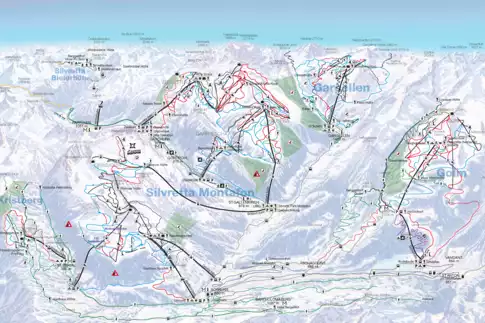"We had the better shoes"
Friedrich Juen comes from a small smuggler dynasty from Gargellen. His great-uncle Meinrad Juen was regarded as a particularly shrewd smuggler who later also helped people to flee to freedom.
Out of necessity, courageous men and women from the border areas between Austria and Switzerland transported anything and everything over the mountains in their frame rucksacks. The hot goods were sometimes even brought to the Viktualienmarkt in Munich. Popular goods were unroasted coffee beans, which could not be smelled by customs officers, but also wine and cereals. Even back then the shrewd smugglers had a few ideas for diverting attention from their tracks. To deceive their pursuers, they nailed the soles onto their shoes reversed. Even today, some things will remind you of the smugglers, and you can hike through a piece of their world on magnificent mountain tours.
Why did the smuggling take place?
Friedrich Juen:Due to poverty and unemployment, smuggling was an important source of income for the inhabitants of the valley to improve their living conditions. Before World War I - around 1890 - coffee, flour, salt, tobacco and saccharin were smuggled in particular. Really, everything that did not exist in the Montafon or existed only at inflated prices – animals and products such as butter and meat and skins and cow hides were brought into Switzerland. Rarely was more than 25 kg shouldered, to make it easier to navigate the steep and dangerous mountain paths, and if necessary to also be able to run away. The coffee beans were transported by the smugglers unroasted, so the smell did not make its way into the custom officer’s nose. Even sugar was smuggled, but it was too heavy and was not so profitable. By comparison, cigarettes and tobacco were better choices. The shoes of the Montafon residents were also in demand amongst the Swiss inhabitants of the Alps. Smugglers supplied them with the shoes and turned it into a small business.
What are the so-called “coffee holes”?
Friedrich Juen:Coffee holes were hiding caves and depots at border crossings - often karst holes that have been washed out of the limestone, and about which the customs officers of course knew nothing. Coffee holes were also interim caches: The goods were deposited on the Swiss side and picked up by the Montafon residents.
What could a smuggler expect if he were caught?
Friedrich Juen:If you were caught, the contraband was gone. The smugglers faced jail or fines. Getting caught was also simply perceived as a disgrace. There are also stories of customs officers who had shot at fleeing smugglers. After one such incident, one hut had a total of 90 bullet holes. However, no one was injured.
How were the smugglers viewed?
Friedrich Juen:Of course, the population knew about it. And if you had a good relationship with a smuggler or two, you could use that to your advantage as well.
How long did the smuggling last?
Friedrich Juen:In the 50s and 60s after the Second World War, there was smuggling, for example of shoes. During the Second World War, people who were persecuted by the Nazi regime were also taken by my uncle Meinrad Juen and other Montafon residents over the Alps to the safety of Switzerland.
Is it true that the smugglers went to make music in Switzerland and broke the hearts of women there?
Friedrich Juen:It is true that the Montafon residents were coveted dance partners in Switzerland. Unlike the people of Prättigau, who with their “Knospen" (note: wooden clogs) danced with far less refinement, the Montafon residents had nice dance shoes.







